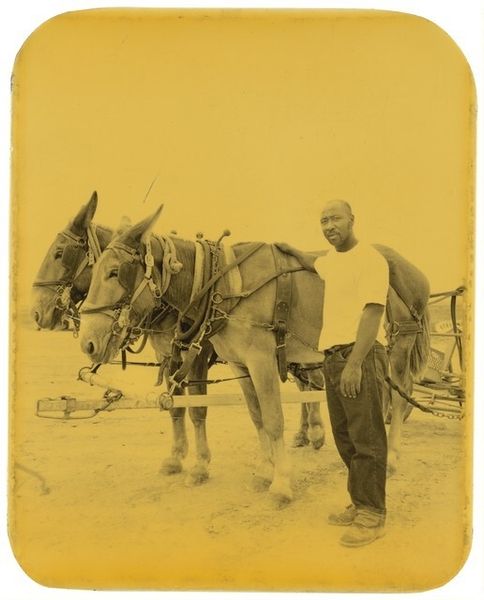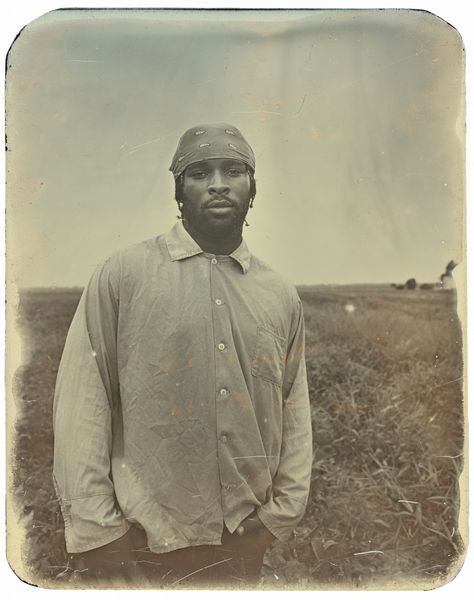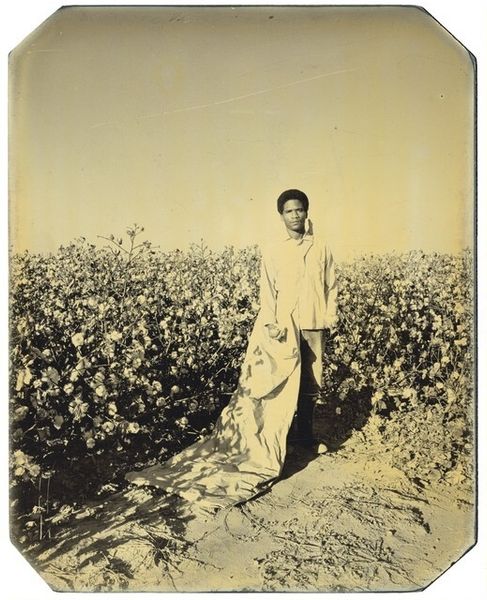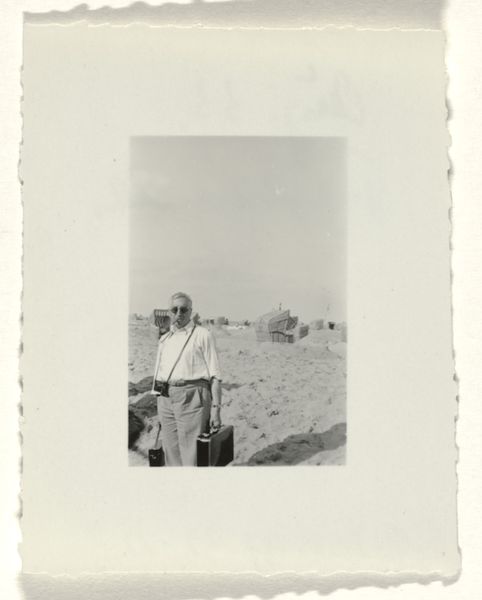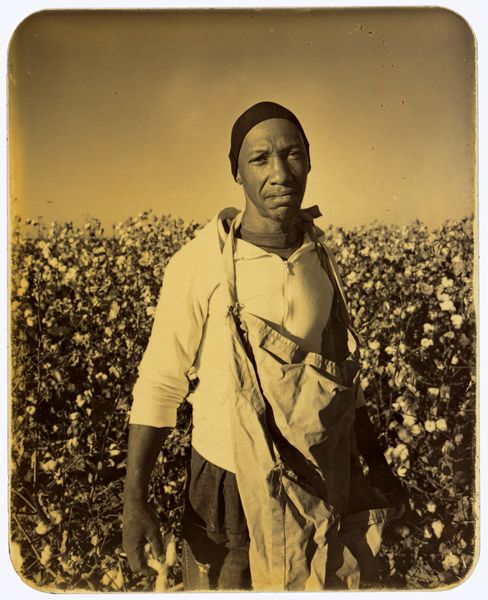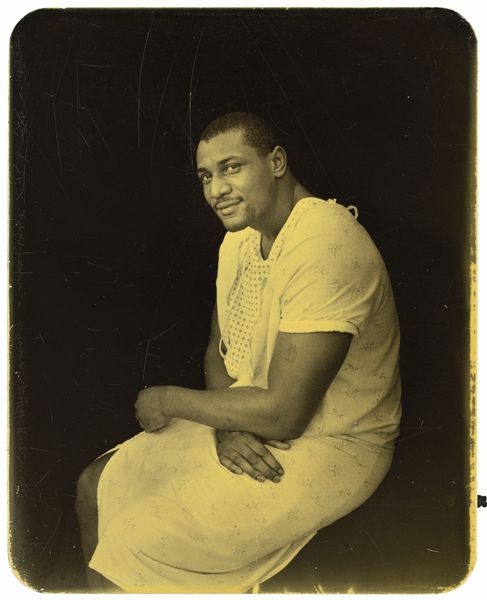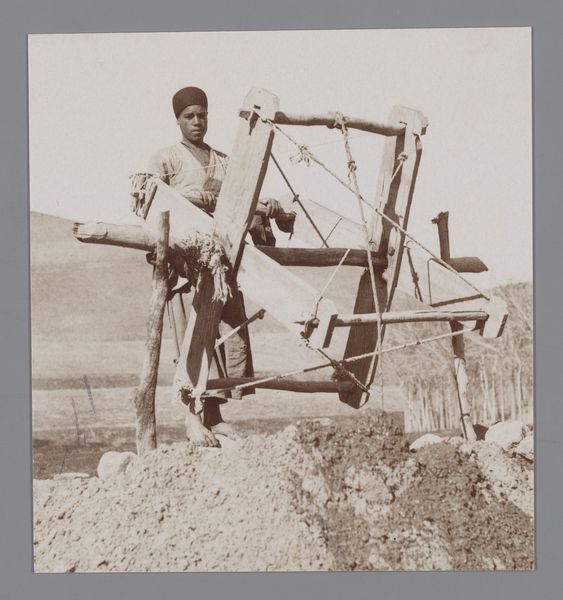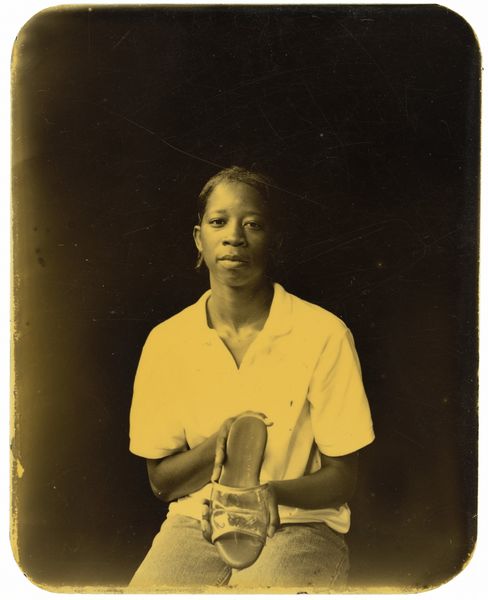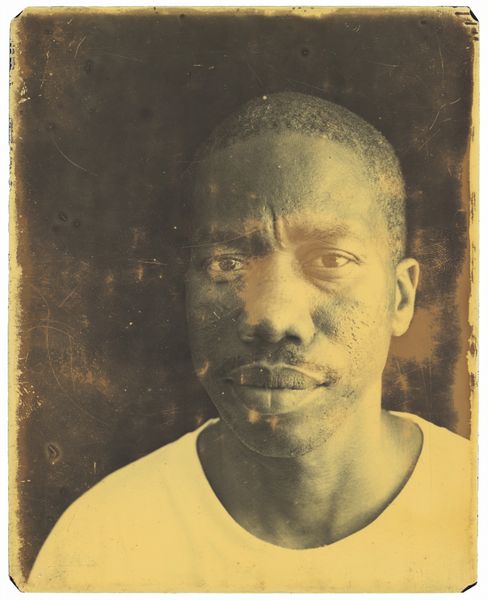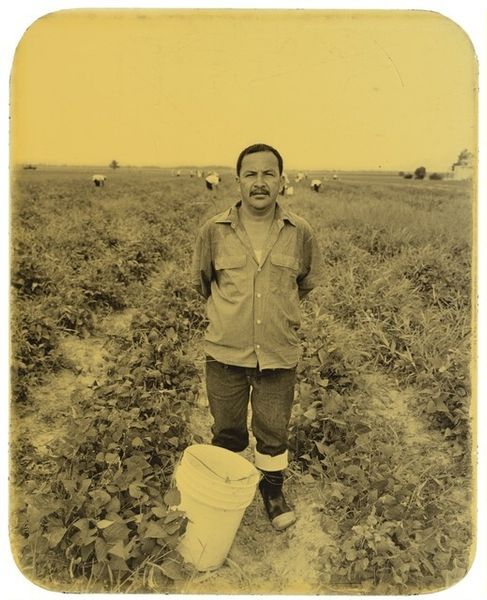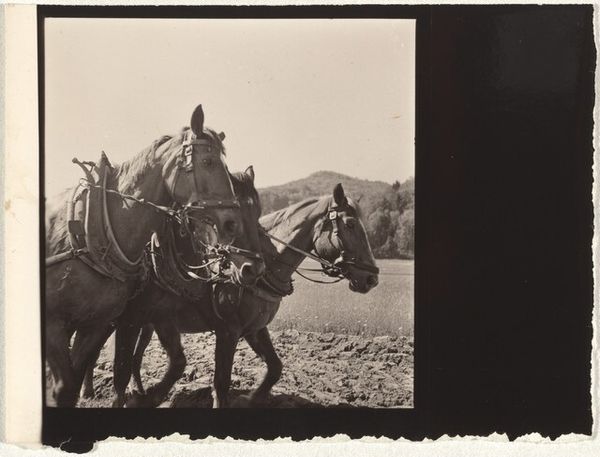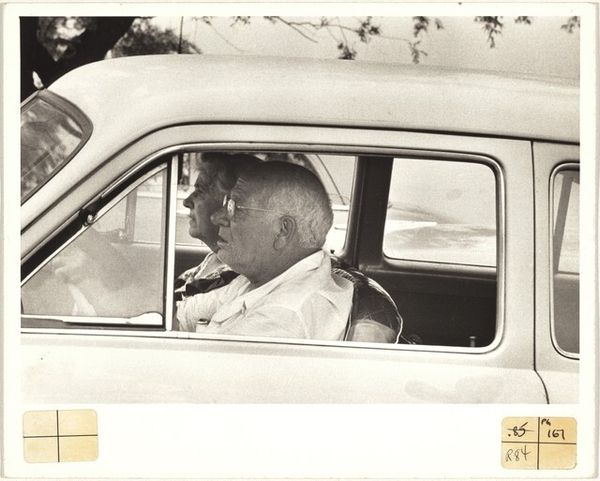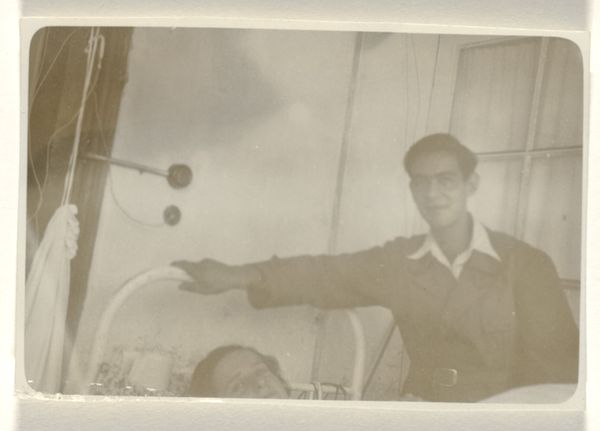
photography, gelatin-silver-print
#
portrait
#
print photography
#
african-art
#
landscape
#
outdoor photograph
#
photography
#
historical photography
#
gelatin-silver-print
#
realism
Dimensions: image/plate: 12.7 × 10.1 cm (5 × 4 in.)
Copyright: National Gallery of Art: CC0 1.0
Editor: Here we have Deborah Luster’s “Angola, Louisiana,” a gelatin-silver print from 1999. I'm really struck by the… honesty of the image. The starkness and the slightly aged tone lend it a very raw quality. What draws your eye when you look at this photograph? Curator: I see the converging narratives of labor, environment, and representation. Luster's choice of gelatin-silver printing, a technique steeped in photographic history, connects us to the tradition of documentary photography, especially concerning marginalized communities. How does the depicted environment of Angola—a prison farm—affect our understanding of the man and the horse? Editor: It definitely complicates things. The location casts a shadow over the relationship between the man and the animal, suggesting themes of captivity and forced labor, maybe? The texture and tones are almost like visual documents, as evidence of lives lived within this very specific system. Curator: Precisely. Consider also the material presence of the photograph itself. The gelatin silver print is an object that embodies a specific time, process, and even the social context of its production and consumption. Does the tactile quality of the print itself enhance or challenge the scene it depicts? Editor: I think it strengthens the impact, makes it feel more 'real' than, say, a digital print might. Knowing that the image was developed in a darkroom, with tangible materials, somehow adds to the weight of its message. I hadn't considered that before! Curator: Luster's work goes beyond simply representing a subject. She invites us to consider the materials, labor, and socio-political forces that converge to produce the photograph itself. Editor: That’s a great point! I'll definitely look at photography with more consideration for the artist’s choices in materials and how they contribute to meaning now.
Comments
No comments
Be the first to comment and join the conversation on the ultimate creative platform.
